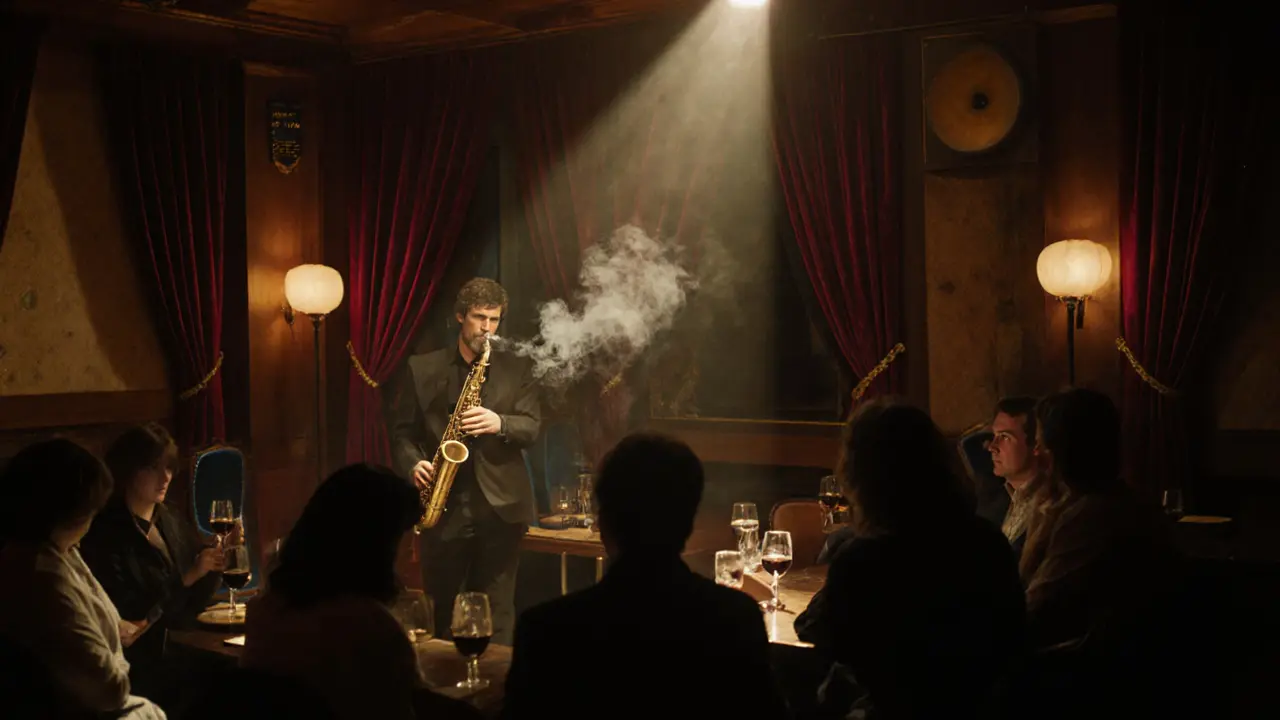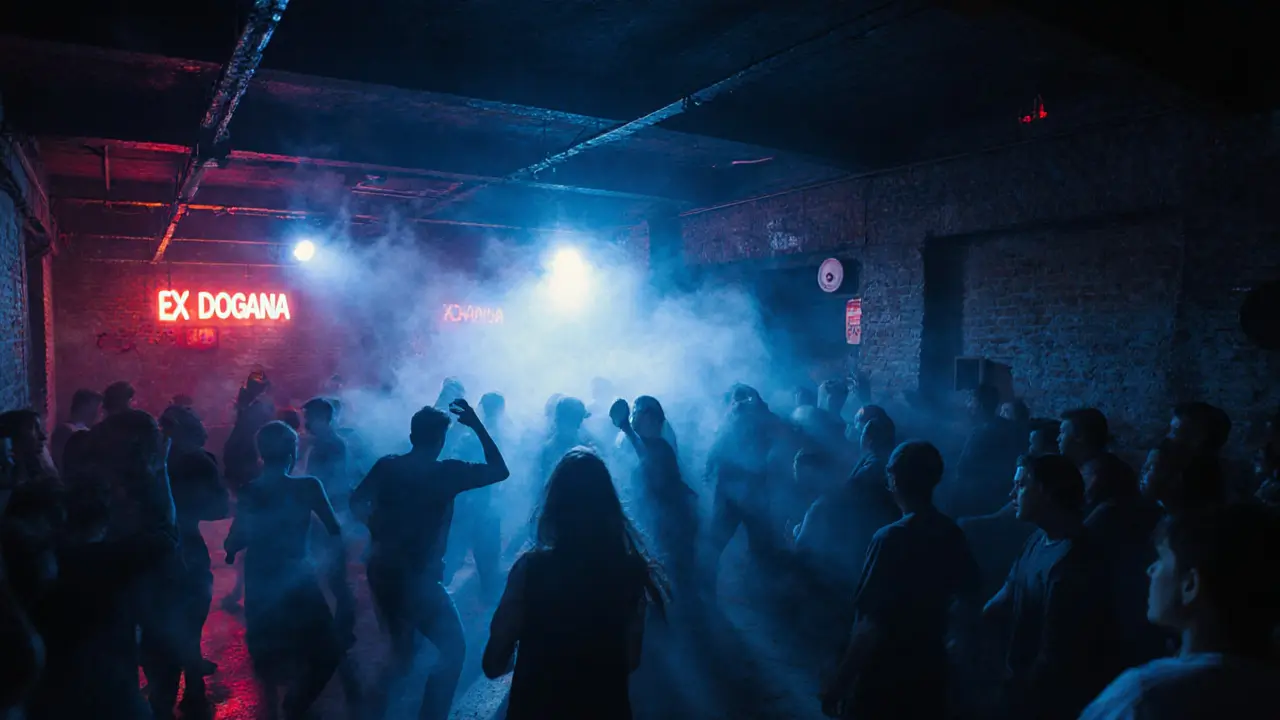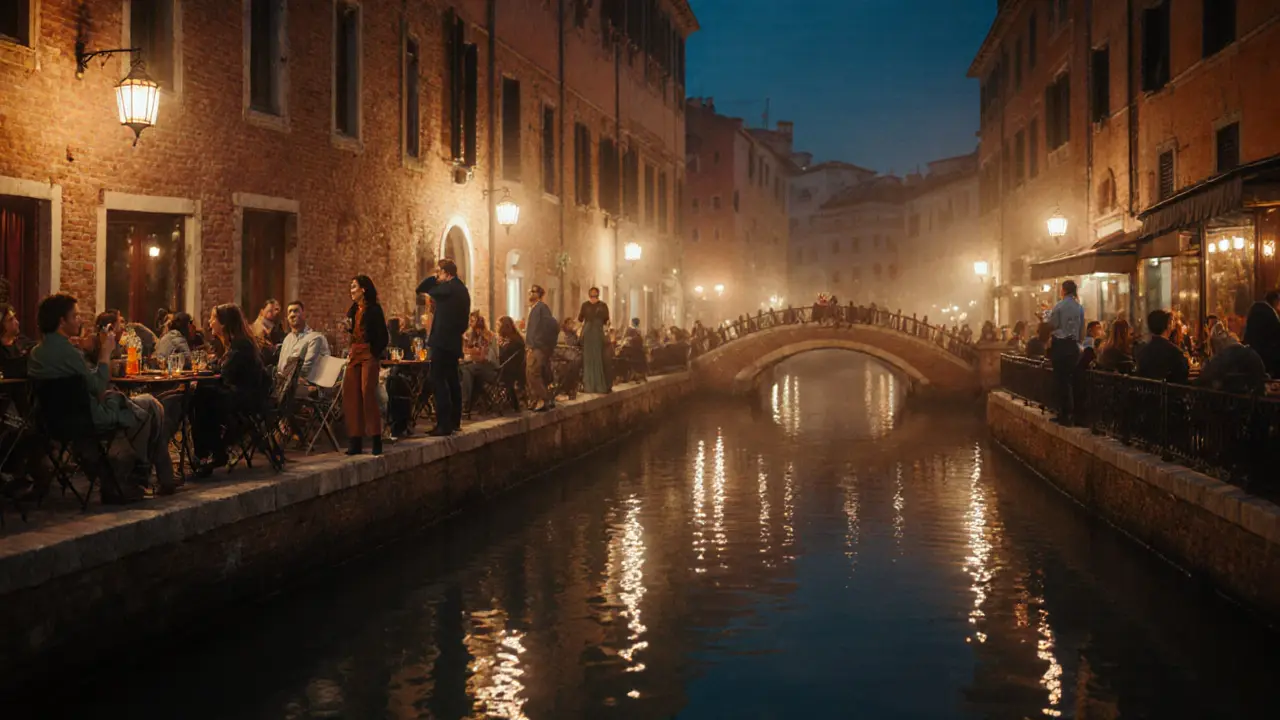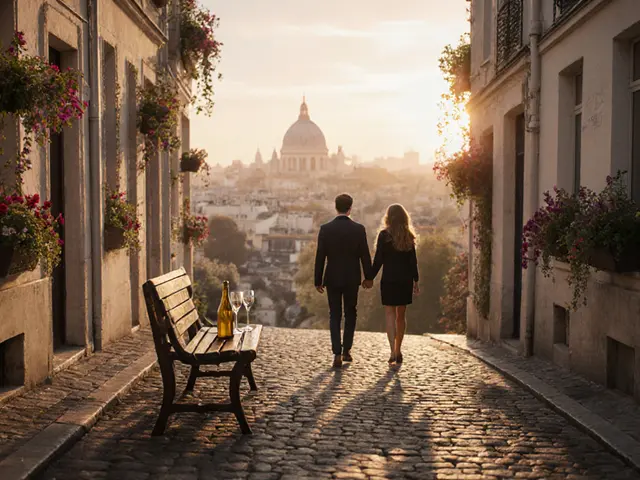When the sun sets in Milan, the city doesn’t sleep-it gets louder, brighter, and more alive.
Most visitors think of Milan as fashion runways and Michelin-starred restaurants. But by 10 p.m., the real Milan emerges. You’ll find young professionals sipping Aperol spritzes in hidden courtyards, DJs spinning underground techno in converted warehouses, and groups of locals dancing until sunrise in spots that don’t even have signs. This isn’t just partying. It’s a cultural rhythm you won’t find anywhere else in Italy.
Start in Navigli: The Canals That Never Close
Head to the Navigli district, especially along the Naviglio Grande canal. This is where Milan’s nightlife began, and it still holds its soul. The area is lined with centuries-old brick buildings now housing wine bars, craft beer spots, and outdoor terraces that spill onto the water. Around 8 p.m., the streetlights come on, and the crowd shifts from lunchtime tourists to locals in stylish but casual outfits.
Try Bar Basso-yes, the same one that invented the Negroni Sbagliato. It’s tiny, no reservations, and you’ll stand shoulder-to-shoulder with Milanese fashion designers and artists. Order the classic cocktail, watch the sunset over the canal, and let the buzz pull you deeper into the neighborhood. Don’t miss La Cucina di Naviglio, where the wine list changes weekly and the bar snacks are made from ingredients delivered that morning.
Move to Brera: Art, Jazz, and Intimate Spots
If you want something quieter but just as rich, walk 15 minutes to Brera. This is the neighborhood where poets, painters, and poets-turned-djs hang out. The streets are narrow, the buildings are old, and the energy is intellectual but relaxed. You’ll find jazz clubs tucked behind unmarked doors, and live acoustic sets in bookshops that turn into bars after dark.
Blue Note Milano is the city’s most respected jazz venue. It’s not flashy, but the sound quality is perfect. You’ll hear local legends and touring artists from New York and Berlin. Tickets cost around €15, and you can grab a glass of Barolo at the bar while you listen. If jazz isn’t your thing, try La Fabbrica del Vapore-a former factory turned cultural hub. On weekends, it hosts experimental music nights, spoken word, and pop-up art installations that turn into dance floors by midnight.

Clubs: Where Milan Gets Wild
Milan’s club scene isn’t about glitter and VIP sections. It’s about music, mood, and movement. The best clubs here don’t advertise. You find them by word of mouth, through Instagram stories, or by following the crowd.
Teatro degli Arcimboldi is a former theater turned club space. It’s big, with multiple rooms and a rooftop terrace. They book international DJs who play deep house, techno, and disco. Entry is €15-25, depending on the night. Arrive after 1 a.m. to avoid the line. The crowd is mixed-students, designers, expats, and Italians who’ve been coming for 20 years.
For something rawer, head to Ex Dogana in the Porta Genova area. It’s in an old customs building, with no fancy lighting, just strobes and fog machines. The music is industrial, experimental, and loud. This isn’t a place to sip cocktails. It’s a place to lose yourself in the beat. Locals say it’s the only club in Milan that still feels like the 90s.
Hidden Gems: Where the Locals Go
Most tourists never make it past Navigli and Brera. But if you want to see how Milanese people actually unwind, you need to go off the map.
Il Covo dei Vini is a tiny wine bar under a railway arch in the Lambrate district. No menu-just a chalkboard with 12 wines from small Italian producers. The owner pours you a taste, tells you where it’s from, and asks what you’re feeling. It’s €8 for a glass. They open at 7 p.m. and close when the last person leaves.
Another secret: Bar Centrale in the Porta Venezia area. It’s been around since 1948. No Wi-Fi, no music, just old men playing cards, students studying, and couples sharing a bottle of Prosecco. It’s not a party spot. But if you want to understand Milan after dark, sit here for an hour. Watch how time slows down.
What to Wear, When to Go, and What to Avoid
Milanese people dress for the night. Even in winter, you’ll see tailored coats, leather boots, and minimalist jewelry. You don’t need to look like a model, but avoid sweatpants, flip-flops, or baseball caps. The dress code is relaxed chic-think dark jeans, a nice shirt, and a jacket.
Don’t show up before 10 p.m. If you’re there at 9:30, you’ll be the only one. Most places don’t fill up until after 11. And don’t expect American-style happy hours. Drink prices are steady all night.
Avoid the tourist traps near the Duomo. Places like “Milan Night Club” or “Italian Disco” with neon signs and cover charges over €30? They’re for people who don’t know better. The real scene doesn’t advertise.

Transport and Safety: Getting Around After Dark
Milan’s metro runs until 1:30 a.m. on weekdays and 2:30 a.m. on weekends. Buses run 24/7 on major lines, but the metro is faster and safer. Taxis are reliable, but Uber is banned. Use FreeNow or the official taxi app.
Crime is low, but pickpockets work the crowded areas around Navigli and Porta Venezia. Keep your phone and wallet tucked away. Don’t walk alone in empty side streets after 2 a.m.-stick to main roads.
Seasonal Shifts: What’s Different in Fall and Winter
October through February is when Milan’s nightlife truly shines. The weather is cool, the crowds are thinner, and the energy is more intimate. Outdoor terraces still buzz with heaters and blankets. Many clubs switch to themed nights-think retro 80s, synthwave, or vinyl-only sets.
In November, Milan Night Festival takes over. Dozens of venues open late for free entry, with live sets, pop-up bars, and art installations. It’s the best time to explore without spending a euro.
Final Tip: Don’t Plan Too Much
The best nights in Milan happen by accident. Walk without a map. Ask a bartender where they go after their shift. Follow a group of locals down a side alley. You might end up in a basement with a DJ spinning rare Italo disco, or a rooftop with a view of the Duomo and a glass of Lambrusco.
This isn’t a checklist. It’s a vibe. And once you feel it, you’ll understand why Milan’s nightlife isn’t just about where you go-it’s about how you move through the city after dark.
What time do Milan clubs open and close?
Most clubs don’t get busy until after 1 a.m. and stay open until 5 a.m. or later. Some, like Ex Dogana, don’t even start until midnight. Bars and wine lounges stay open until 2 a.m., with some staying open later on weekends. Always check the venue’s Instagram for last-minute changes.
Is Milan nightlife expensive?
It depends. A cocktail in Navigli costs €12-15. Entry to clubs ranges from €10 to €25, depending on the night and artist. Wine bars like Il Covo dei Vini charge €8 per glass. You can have a great night out for €30-40 if you skip the tourist spots and stick to local favorites. Avoid places with cover charges over €30-they’re usually not worth it.
Can I go out alone in Milan at night?
Yes, and many locals do. Milan is one of the safest major cities in Europe after dark. Stick to well-lit, populated areas like Navigli, Brera, and Porta Venezia. Avoid isolated streets after 2 a.m. and keep your belongings secure. Solo travelers are common in Milan’s bars and clubs-no one will judge you for coming alone.
Do I need to speak Italian to enjoy Milan nightlife?
Not at all. English is widely spoken in bars, clubs, and tourist areas. But learning a few phrases like "Un bicchiere di vino, per favore" or "Grazie" goes a long way. Locals appreciate the effort, and it often leads to better service or even an invitation to a hidden spot.
Are there any dress codes in Milan clubs?
Yes, but they’re not strict. No flip-flops, sportswear, or baseball caps. Think smart casual: dark jeans, a button-down or nice top, and closed shoes. Some upscale venues like Teatro degli Arcimboldi may check your outfit at the door, but most places just want you to look put-together. If you’re unsure, dress slightly nicer than you think you need to.






Written by Marcus Everstone
Hello, my name is Marcus Everstone and I am an expert in the world of escorting. Having been in the industry for several years, I have gained a wealth of knowledge in this field. I enjoy sharing my experiences and insights by writing about the escort scene in various cities around the globe. My goal is to help both clients and escorts navigate this exciting and often misunderstood world. My writings reflect my passion and expertise, offering valuable information to those interested in learning more about the escort industry.
All posts: Marcus Everstone